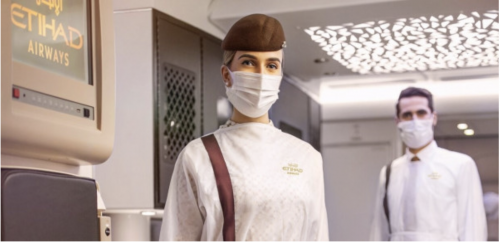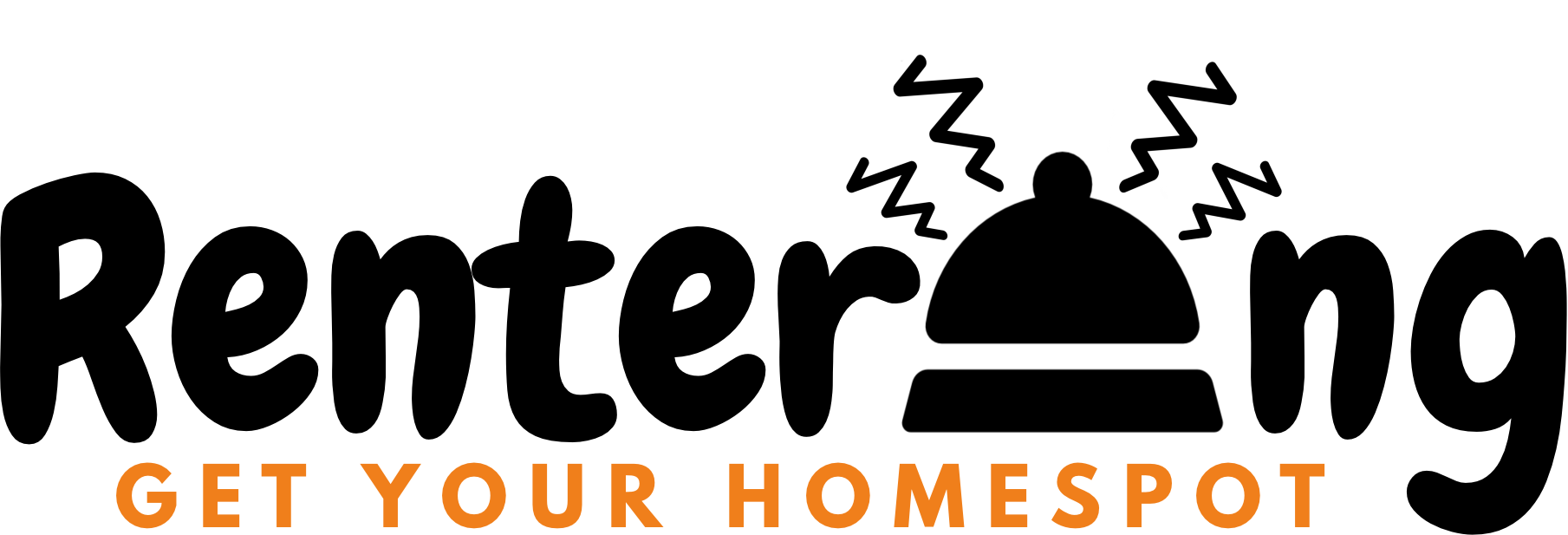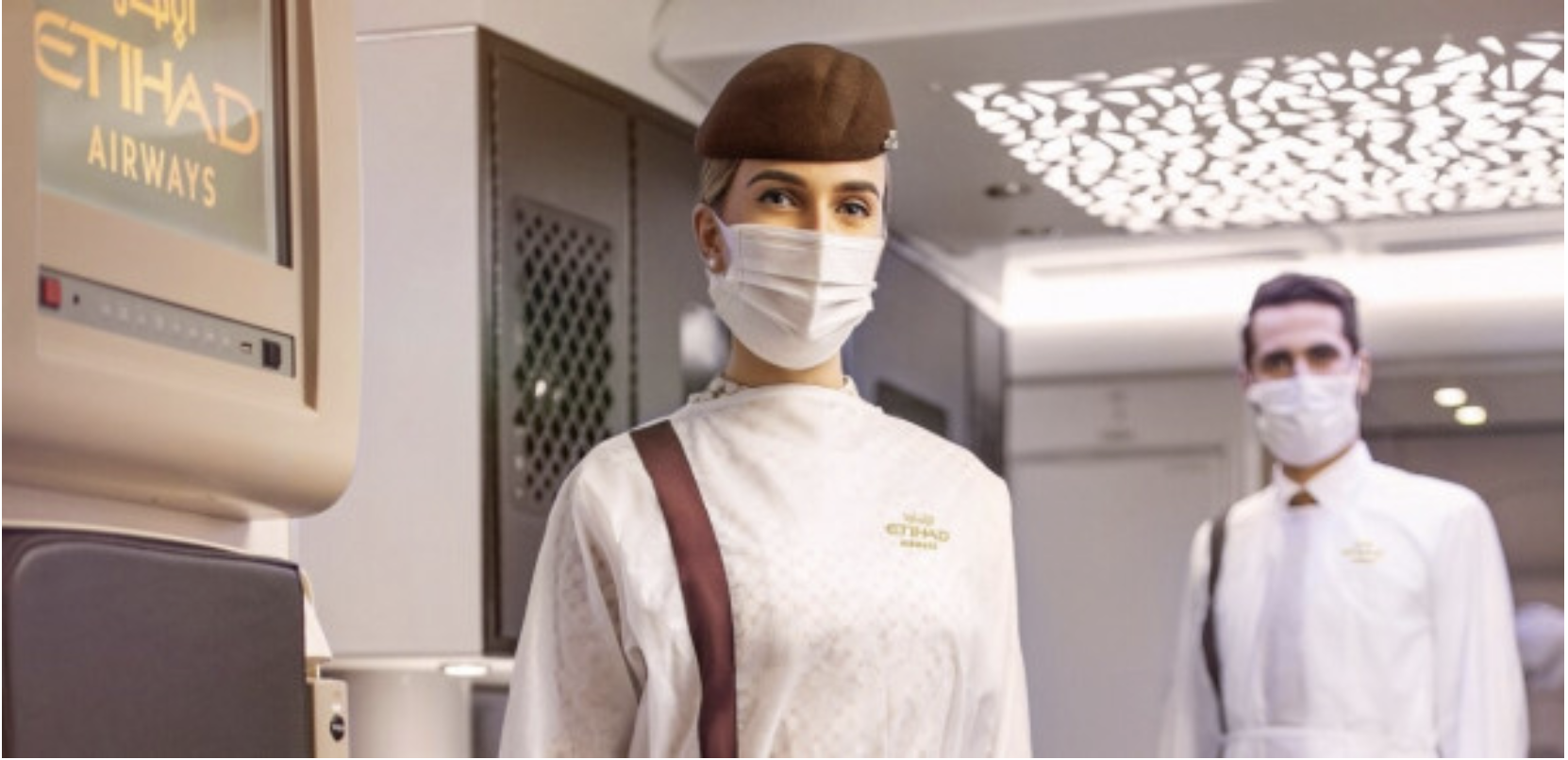
2) Electrostatic antiviral spray: This method, widely used by US airlines, dispenses disinfectant with a slight positive electrical charge. Small particles are attracted to the surfaces of the cabin as they have a natural neutral or negative charge. It is a very effective method of covering all surfaces, such as containers, seats, air nozzles and light controls, and tray tables.
3) Mandatory face mask: All airlines in the survey, except for Qantas, require passengers to wear face covering. Air France, in line with French government regulation, specifically asks for surgical masks.
4) Passenger Care Kits: Items provided free of charge to passengers may include some or all of these protective items such as a mask, disinfectant wipes, and disinfectant liquid or sanitizing gel.
5) Temperature verification: these are being applied both by airlines and by airport and health authorities, especially in the main hubs.
6) Cabin Baggage Restrictions (CB): Airlines restrict carry-on baggage to create a safer and less congested embarkation and disembarkation process, avoiding contact or interaction between passengers and between passengers and flight personnel.
7) Hand Sanitizer (HS): Airlines are ensuring the availability of hand sanitizer in gate areas and on airplanes.
8) Empty center seat (MS). Several US airlines are complying, but not the European ones. The authorities have not established it as an obligation, since it does not guarantee the social distance of 1.5 meters and, if a mask is used, it is not strictly necessary on airplanes, due to the quality of the air in the cabin and its recycling and sanitation. consistent with HEPA filters.
9) Protective equipment for cabin crew (PE): Beyond the provision of a higher quality face mask, some airlines provide cabin crew with face shields or clear glasses and plastic blouses / aprons.
10) Disinfectant sprayer or nebulizer (SD) for cleaning the aircraft.



